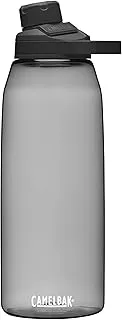Whether you're exploring local trails or conquering mountain peaks, having the right day hike packing list ensures safety, comfort, and enjoyment on every outdoor adventure. I've spent over a decade hiking trails across the country, and this comprehensive guide shares everything I've learned about packing smart for day hikes, from essential gear to emergency supplies that could save your life.
REI's comprehensive guide to day hiking essentials
Essential Day Hiking Gear
After years of trail experience, I've refined my day hike packing list to include only the most crucial items. Every piece of gear serves a specific purpose, whether for safety, comfort, or navigation. The key is finding the right balance between being prepared and avoiding unnecessary weight that will slow you down on the trail.
Personal Experience Note
I learned the importance of a proper day hike packing list the hard way during a seemingly simple 5-mile hike in the Colorado Rockies. What started as perfect weather turned into an unexpected thunderstorm, and I was grateful for every extra layer and emergency item I'd packed. That experience taught me that even day hikes require serious preparation.
The foundation of any successful day hike starts with understanding the essential hiking gear for beginners. Whether you're new to hiking or a seasoned adventurer, certain items should never be left behind. Let me walk you through each category, explaining why each item earned its place on my tried-and-tested day hike packing list.
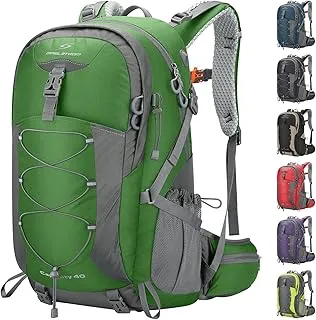
Choosing the Perfect Daypack
Your daypack is the cornerstone of your day hike packing list. After testing dozens of packs over the years, I've found that the ideal daypack should be between 20-35 liters for most day hikes. This size provides enough space for all essentials without encouraging overpacking, which is a common mistake I see among newer hikers.
Top Daypack Features to Look For:
- Padded shoulder straps and hip belt for comfort
- Hydration reservoir compatibility
- Multiple compartments for organization
- External attachment points for trekking poles
- Rain cover or water-resistant material
During my recent hike through Yosemite's Half Dome trail, I used a 30-liter pack that perfectly accommodated my day hike packing list without feeling bulky. The key is selecting a pack that fits your torso length properly - I always recommend getting fitted at a local outdoor store before making a purchase.
🎒 RECOMMENDED DAYPACK
.webp)
Maelstrom 40L Hiking Daypack
Waterproof, lightweight design with rain cover - perfect for any day hike packing list
🛒 Check Price on Amazon
Hydration and Nutrition Essentials
Proper hydration and nutrition form the backbone of any successful day hike packing list. I've learned through experience that dehydration can turn a pleasant hike into a dangerous situation faster than most people realize. During a challenging hike in Arizona's Sedona area, I witnessed fellow hikers struggle with heat exhaustion simply because they underestimated their water needs.
Water Requirements and Systems
The general rule I follow is one liter of water per two hours of hiking, but this varies significantly based on temperature, humidity, and exertion level. For desert hikes or summer conditions, I often double this amount. The delivery system matters too - I prefer hydration reservoirs for longer hikes because they encourage more frequent drinking.
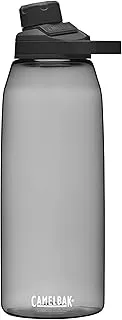
💧 TOP HYDRATION CHOICE

CamelBak Chute Mag Water Bottle
BPA-free with magnetic cap - essential for every day hike packing list
🛒 Get Your Water Bottle
Trail Nutrition Strategy
Energy management is crucial for maintaining strength throughout your hike. I pack a combination of quick-energy snacks and more substantial fuel. My go-to day hike packing list includes energy bars, trail mix, and fresh fruit for shorter hikes. For longer adventures, I add sandwiches or wraps that provide sustained energy without weighing down my pack.
The timing of nutrition intake matters as much as what you bring. I learned this during a demanding hike to Mount Whitney, where proper fuel timing made the difference between summiting successfully and turning back. For comprehensive nutrition strategies, check out our multi-day hike packing list which covers extended nutrition planning.
Safety and Emergency Supplies
No day hike packing list is complete without proper safety and emergency gear. These items might seem unnecessary on a beautiful sunny morning, but conditions can change rapidly in the outdoors. I've used every piece of emergency equipment in my pack at some point, whether for myself or to help fellow hikers in distress.
First Aid and Medical Supplies
A comprehensive first aid kit is non-negotiable on any hike. During a recent trek in the White Mountains, a fellow hiker slipped and sustained a deep cut. Having proper medical supplies allowed me to provide immediate care until help arrived. Your first aid kit should include bandages, antiseptic wipes, pain medication, and blister treatment supplies.
🏥 ESSENTIAL FIRST AID
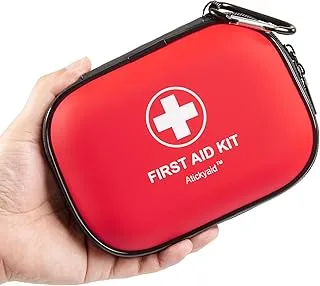
120-Piece Waterproof First Aid Kit
Compact, comprehensive medical kit - crucial for any day hike packing list
🛒 Secure Your Safety Kit
Navigation and Communication Tools
Even on familiar trails, navigation tools are essential components of your day hike packing list. I always carry a map and compass as backup to my smartphone GPS. During a foggy morning hike in Olympic National Park, my phone battery died, and traditional navigation tools were the only way to safely return to the trailhead.
Essential Navigation Items:
- Detailed topographic map of the area
- Reliable compass (learn how to use it!)
- Smartphone with offline maps downloaded
- Portable phone charger or power bank
- Emergency whistle for signaling
Trekking Poles for Stability and Safety
Trekking poles have become an indispensable part of my day hike packing list. Beyond providing stability on uneven terrain, they reduce stress on knees during descents and can serve as emergency tools if needed. I've used mine to probe stream depths, clear spider webs, and even fashion an emergency shelter.
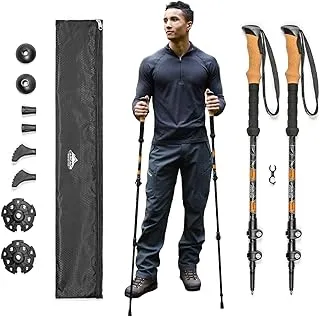
🥾 STABILITY SOLUTION

Cascade Mountain Tech Trekking Poles
Lightweight aluminum with grip extension - perfect for any day hike packing list
🛒 Grab Your Trekking Poles
Seasonal Packing Considerations
Your day hike packing list should adapt to seasonal conditions and weather patterns. I've hiked in all four seasons across various climates, from desert summers to mountain winters, and each requires specific preparation. Understanding seasonal variations is crucial for both safety and comfort on the trail.
Spring and Summer Adaptations
During warmer months, my day hike packing list emphasizes sun protection and increased hydration. I learned this lesson during a July hike in Utah's Zion National Park, where temperatures soared above 100°F. Extra water, electrolyte supplements, and comprehensive sun protection became the difference between enjoying the hike and suffering through it.
For summer hiking, I always pack lightweight, breathable clothing, a wide-brimmed hat, high-SPF sunscreen, and at least 50% more water than I think I'll need. Insect repellent becomes essential in many regions, especially during peak mosquito and tick seasons. Our women's hiking gear guide provides additional insights on gender-specific considerations for seasonal hiking.
Fall and Winter Preparations
Cold weather dramatically changes your day hike packing list requirements. During a November hike in New Hampshire's White Mountains, I experienced how quickly hypothermia can set in when you're unprepared. Layering systems, emergency shelter, and extra food become critical components of winter hiking safety.
Winter Day Hike Additions:
- Insulating layers (fleece or down jacket)
- Waterproof/breathable shell layer
- Insulated gloves and warm hat
- Emergency bivy or space blanket
- Hand and foot warmers
- Microspikes or crampons for icy conditions
Expert Packing Tips and Strategies
After thousands of miles on various trails, I've developed specific strategies that make my day hike packing list more effective and efficient. These tips come from real experience, including mistakes that taught valuable lessons about preparation and gear selection.
Weight Distribution and Pack Organization
Proper pack organization is as important as what you include in your day hike packing list. I follow the principle of keeping heavy items close to my back and lighter items toward the outside. Emergency gear goes in easily accessible pockets, while items needed during the hike stay within reach.
During a challenging ascent of Mount Washington, I witnessed a hiker struggle because her pack was poorly organized. She had to unpack everything to reach her rain jacket when weather turned bad. Proper organization isn't just about convenience—it's about safety and efficiency when conditions demand quick access to gear.
Pro Packing Tips from the Trail:
- Test your complete pack load before hitting challenging trails
- Keep emergency items in consistent locations across all packs
- Use packing cubes or stuff sacks to organize gear categories
- Balance weight evenly to prevent pack shifting
- Practice accessing critical gear while wearing gloves
Pre-Hike Planning and Preparation
The most comprehensive day hike packing list won't help if you haven't done proper pre-hike planning. I always check weather forecasts, trail conditions, and park regulations before departing. This preparation often leads to modifications in my gear selection based on current conditions.
One memorable example occurred during a planned hike in Rocky Mountain National Park. Last-minute weather reports showed incoming storms, so I adjusted my day hike packing list to include additional rain protection and emergency shelter. That storm hit exactly as predicted, and the extra preparation made the difference between a safe descent and a potentially dangerous situation.
For comprehensive gear selection guidance, I recommend consulting our detailed backpacking gear list, which covers advanced equipment considerations that often apply to longer day hikes as well.
Conclusion
Creating the perfect day hike packing list is both an art and a science, requiring balance between preparation and practicality. Through years of trail experience, I've learned that the best packing list is one that adapts to conditions while maintaining essential safety components. Every item should serve a purpose, whether for safety, comfort, or emergency situations.
Remember that your day hike packing list will evolve as you gain experience and encounter different environments. Start with the essentials covered in this guide, then adapt based on your personal needs, local conditions, and hiking style. The goal is to be prepared without being overburdened, confident without being careless.
Final Trail Wisdom
The best day hike packing list is the one you actually use and continually refine. Start with proven essentials, test your gear on easier trails, and gradually build confidence for more challenging adventures. Every hike teaches something new about preparation, and that knowledge makes each subsequent adventure safer and more enjoyable.
Before you head out on your next adventure, take time to review your gear, check weather conditions, and inform someone of your plans. The mountains will always be there, but proper preparation ensures you'll be able to enjoy them safely for years to come. For more comprehensive outdoor preparation guides, visit our main resource hub at NatureGuests.com.
Whether you're planning a gentle nature walk or tackling a challenging peak, remember that your day hike packing list is your safety net and comfort system. Pack smart, hike safe, and enjoy every step of your outdoor journey. The trails are calling—are you ready to answer with confidence?


